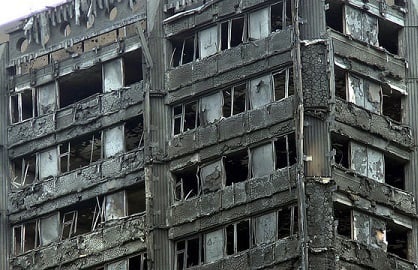

Image by ChiralJon, Flickr
Arconic Inc – supplier of the infamous cladding used at the 67.3-metre tall Grenfell Tower – reportedly provided the flammable version of the panels which are not advisable for properties higher than 10 metres.
A report by Reuters said an Arconic brochure specifies which type of the Reynobond panel it manufactures is suitable for certain heights. A panel with a polyethylene (PE) core is considered combustible and, as mentioned, is not recommended for tall properties.
There are two other types of panels with a fire-retardant core and a non-combustible core – they are appropriate for buildings with heights of up to 30 metres, and 30 metres and above respectively. In the case of Grenfell Tower, even the fire-retardant type would not have sufficed.
“When conceiving a building, it is crucial to choose the adapted products in order to avoid the fire to spread to the whole building. Especially when it comes to facades and roofs, the fire can spread extremely rapidly,” read the brochure.
Incombustible material, or the third type, is best for buildings higher than firefighters’ ladders. This is indicated in the brochure – although emails supposedly between Arconic and the contractors in charge of Grenfell Tower’s refurbishment a couple of years ago did not mention the property’s height.
According to the report, Arconic declined to confirm whether it had knowledge of Grenfell Tower’s height at the time. What’s certain is that it knew the panels were for the said property – which has “tower” as part of its name – as well as how much was needed to be supplied.
“While we publish general usage guidelines, regulations and codes vary by country and need to be determined by the local building code experts,” Arconic told Reuters.
Indeed, panels with a PE core are not supposed to be used as cladding on buildings above 18 metres, according to the Department of Communities and Local Government. The non-compliant material escaped scrutiny during inspections conducted by building regulation officers.
Related stories:
Grenfell Tower isn’t the only one
Insurance industry advisors had warned about Grenfell cladding guideline inadequacies
